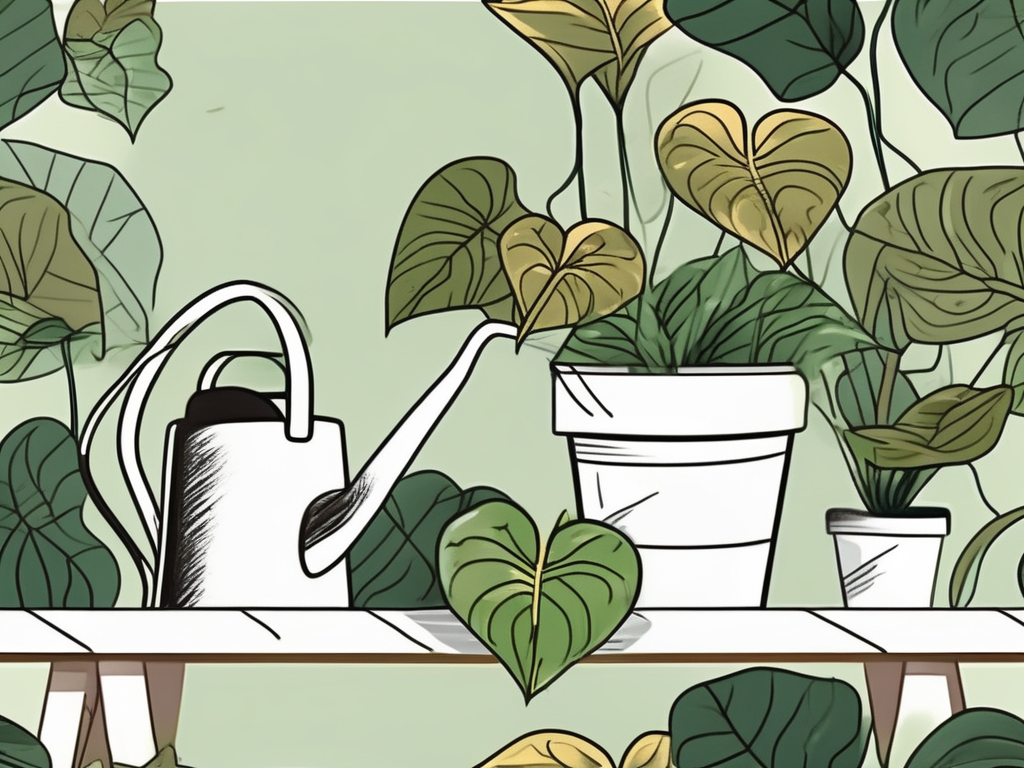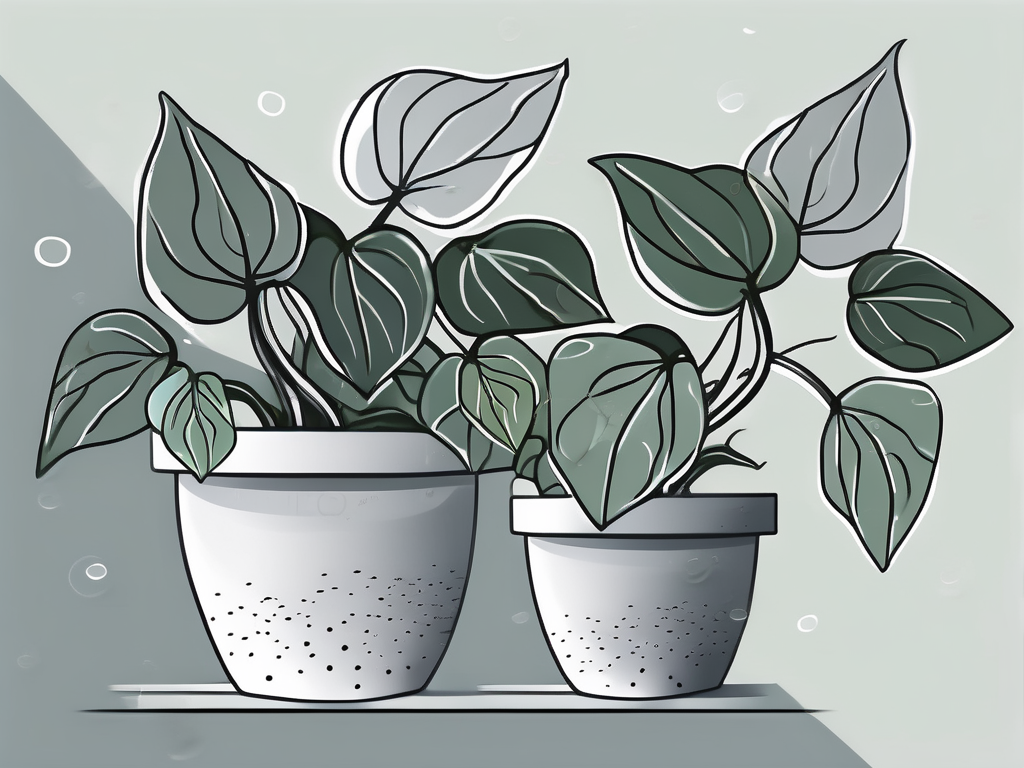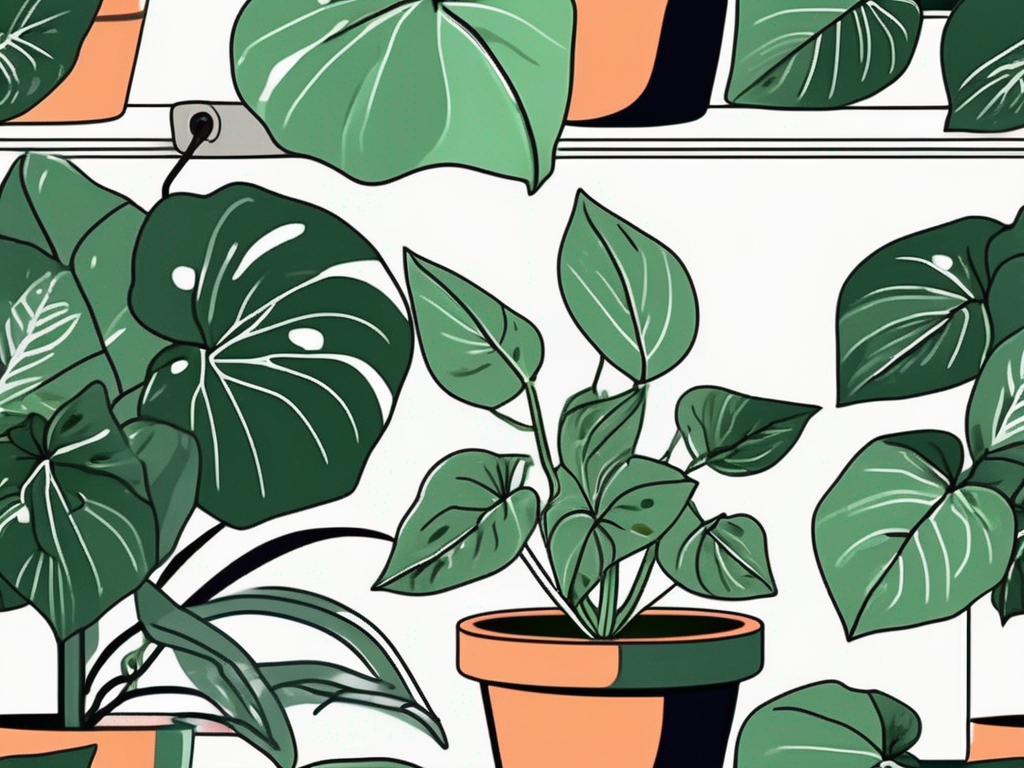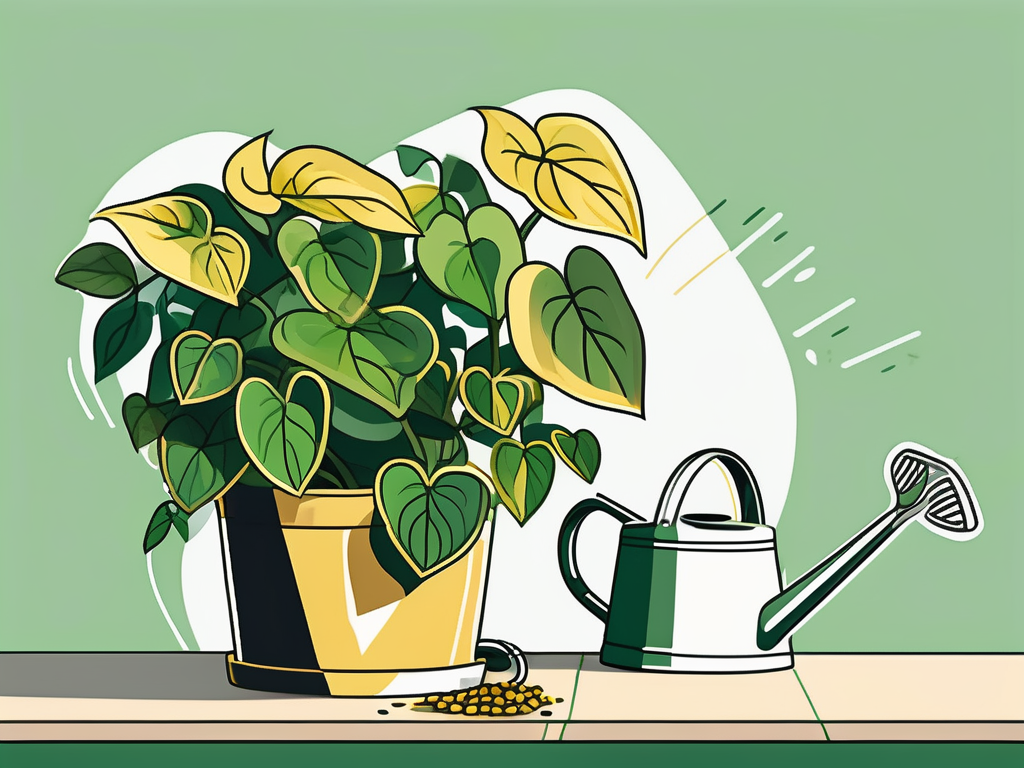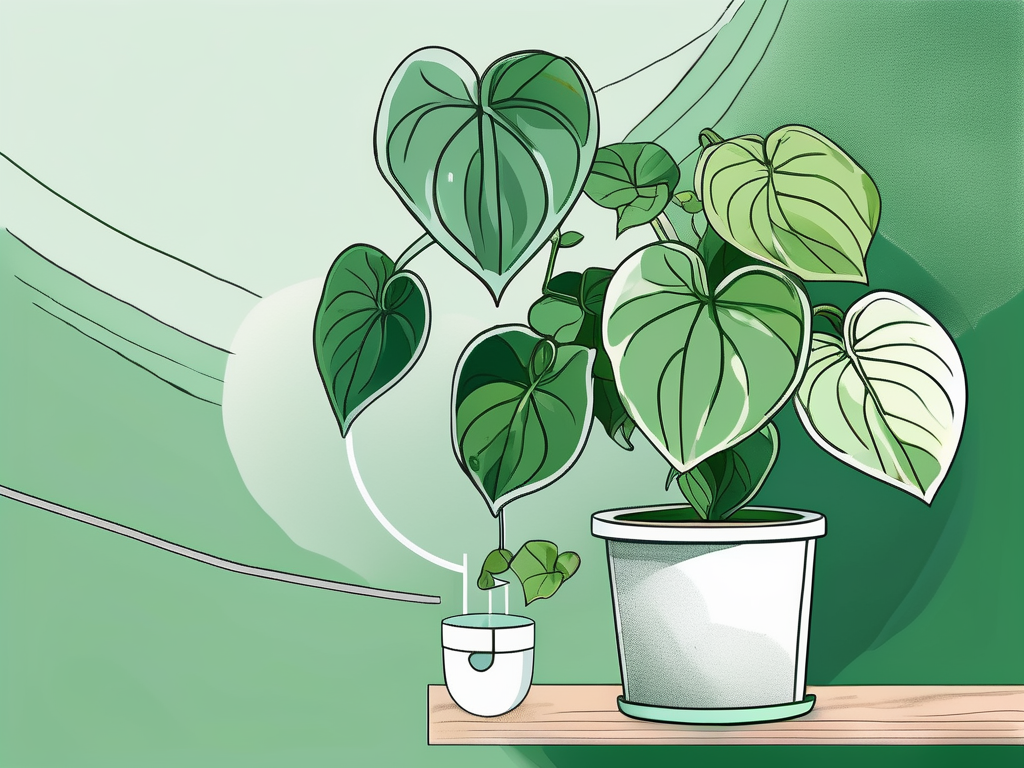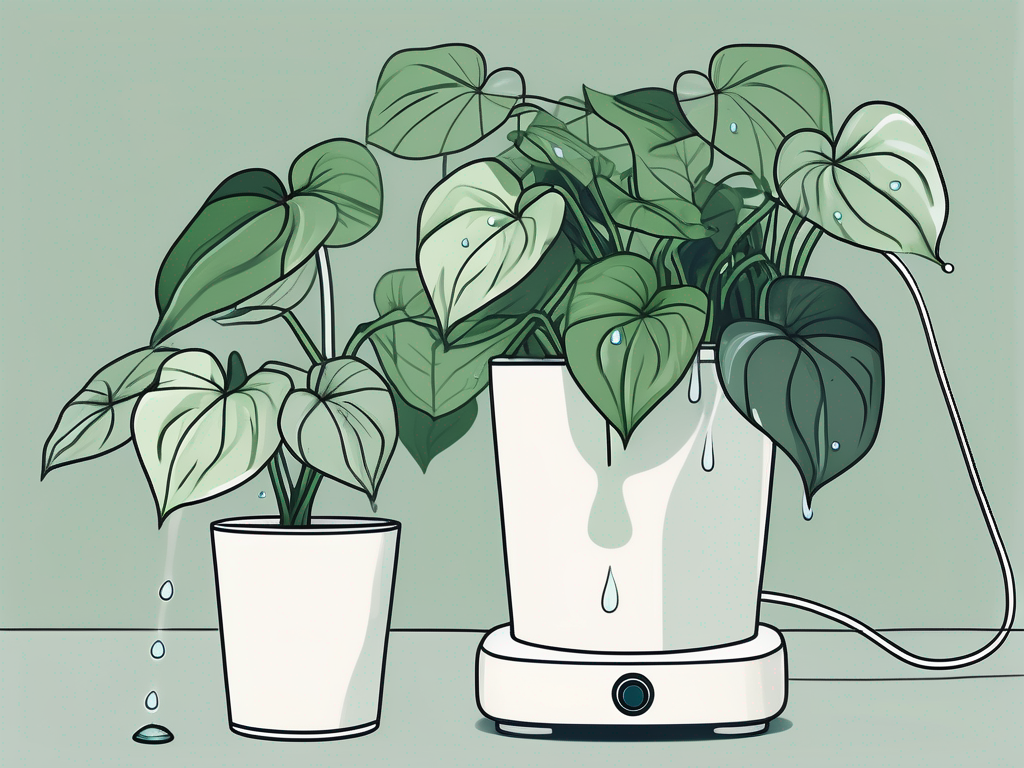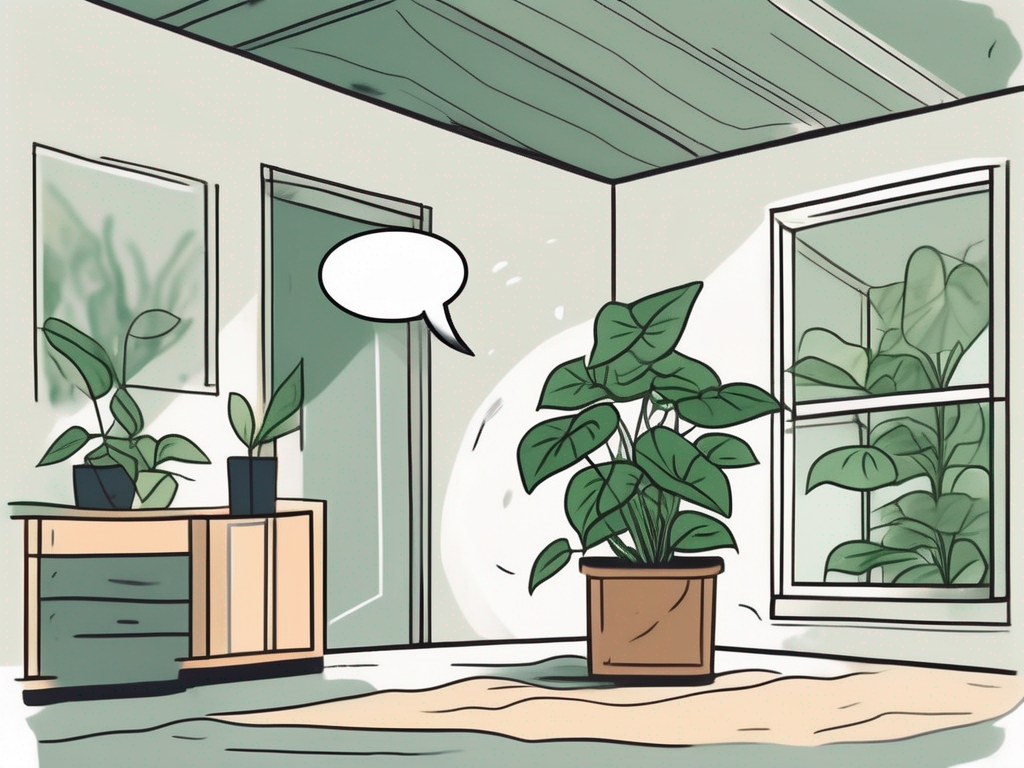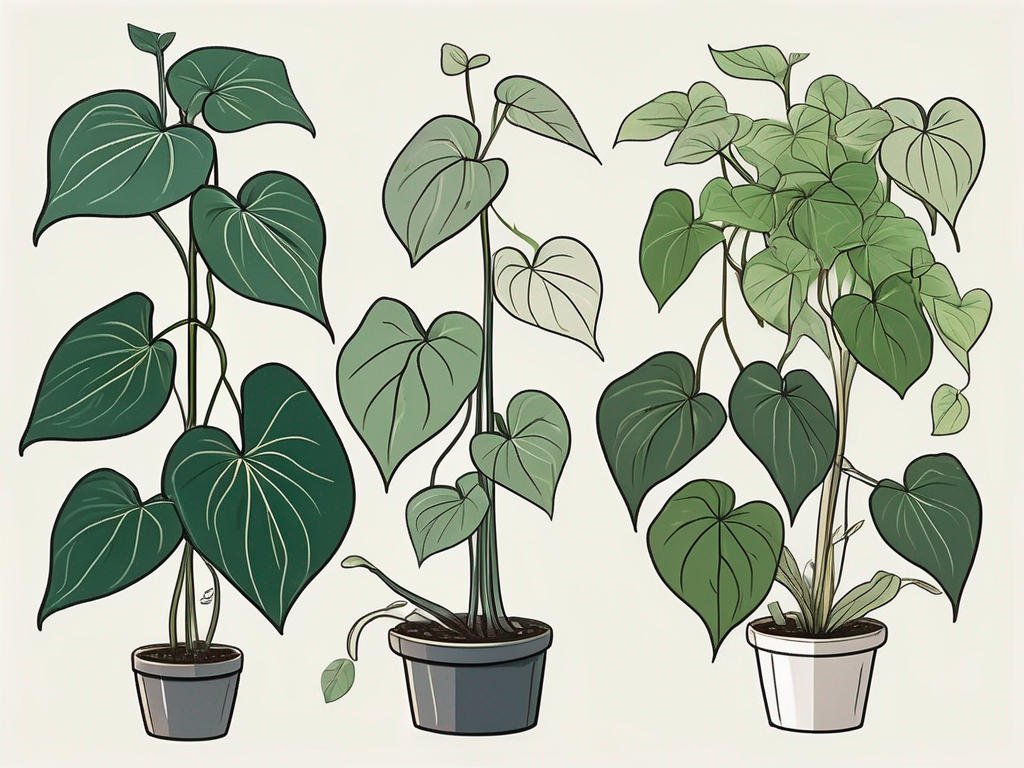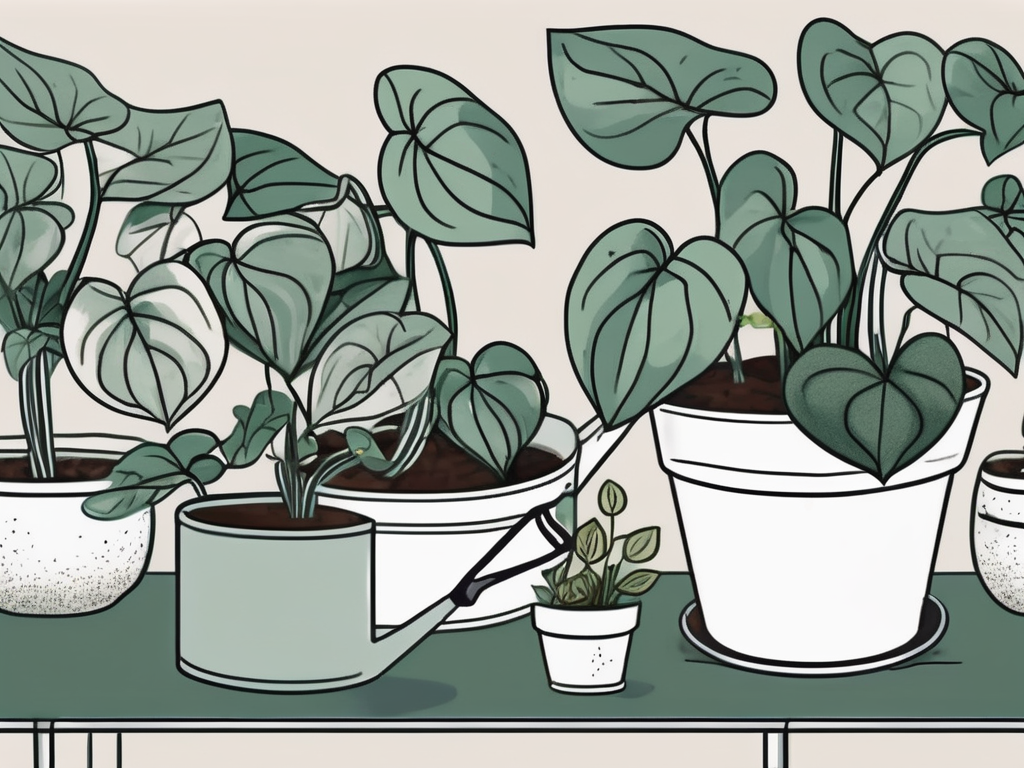
Glacier Pothos is like the cool cousin in your plant family—it's stylish, adaptable, and doesn't require a lot of fuss. With its striking, variegated leaves that look as if they've been gently brushed with snow, it has charm and personality that can elevate any room's decor. But as with any new addition to your home, knowing how to care for it is key to keeping it healthy and happy.
In this guide, we'll explore everything you need to know about caring for your Glacier Pothos. From light and water needs to pest control and styling tips, we'll cover it all. Whether you're a seasoned plant parent or a newbie looking to grow your indoor garden, this guide is here to help you every step of the way.
Understanding the Glacier Pothos
Before we get into the nitty-gritty of care, let's talk about what makes the Glacier Pothos so special. This plant is a variety of the Epipremnum aureum, commonly known as Pothos. What sets Glacier Pothos apart is its distinctive leaf pattern. The leaves are smaller than those of other Pothos varieties, and they boast a stunning mix of white and green that can brighten up any space.
Not only is it beautiful, but the Glacier Pothos is also incredibly resilient. It's a great choice for those who might not have the greenest thumbs. In its natural habitat, it's used to climbing trees in tropical rainforests, which means it's quite adaptable to different indoor conditions. However, it’s always helpful to mimic its natural environment as much as possible to see it truly thrive.
A fun fact about the Glacier Pothos is that it's often confused with its cousin, the N'Joy Pothos, due to their similar appearance. However, the Glacier's leaves tend to have more distinct and well-defined patches of white, almost resembling frost, which is fitting given its name. This unique look not only adds a touch of elegance but also makes it a conversation starter for anyone visiting your home.
Light Requirements
When it comes to lighting, the Glacier Pothos is quite forgiving, but it does have its preferences. Ideally, this plant thrives in bright, indirect light. Think of a spot near a window where it can enjoy the sunlight without being directly exposed to it. Direct sunlight can scorch the leaves, causing the lovely variegation to fade, which would be a real shame.
If your home doesn't have the perfect window situation, don't worry too much. Glacier Pothos can tolerate lower light conditions too. It won't grow as quickly or develop as vibrant colors as it would with more light, but it will still soldier on. It's like that friend who doesn't mind if the party's a bit dull—they're just happy to be there.
Here are some quick tips for finding the right spot:
- Avoid direct sunlight: Too much sun can lead to crispy leaves.
- Consider artificial light: If natural light is scarce, a grow light can work wonders.
- Test and adjust: If you notice the leaves losing their variegation, try moving the plant to a brighter spot.
Remember, the light requirements might vary slightly depending on the season and your geographical location. So, keep an eye on how your plant is responding and adjust as needed. It's a bit like adjusting the thermostat in your home—small tweaks can make a big difference.
Watering Guidelines
Now that we've got light covered, let's chat about water. Glacier Pothos isn't too demanding, but it does appreciate a consistent watering schedule. The key is to let the top inch of soil dry out before giving it a drink. Overwatering is a common pitfall, leading to root rot, which is a surefire way to stress your plant out.
Here's a simple way to check if your plant is ready for watering: stick your finger into the soil about an inch deep. If it feels dry, it's time to water. If it's still moist, give it a few more days. This method is like checking if a cake is done baking—just a quick test can tell you everything you need to know.
When you do water, make sure to do so thoroughly. This means allowing water to flow through the drainage holes at the bottom of the pot. It helps to ensure that all roots are getting the moisture they need without sitting in excess water, which can be problematic.
In terms of frequency, this can vary based on several factors: the season, humidity levels, and even the size of your pot. During the growing season (spring and summer), your Glacier Pothos might need more frequent watering, whereas in the cooler months, you can scale back. It’s a bit of a balancing act, but you’ll get the hang of it with a little practice.
Temperature and Humidity Needs
Your Glacier Pothos is a tropical plant at heart, which means it loves warmth and humidity. Room temperatures between 60-85°F (15-29°C) are ideal. It doesn't like the cold, so during winter months, keep it away from drafty windows or doors. It’s a bit like making sure your pet stays comfy by the fireplace instead of the chilly back porch.
As for humidity, the Glacier Pothos enjoys a bit more than your average houseplant. While it can tolerate average home humidity, it truly flourishes with higher levels. If your home is on the drier side, especially in winter, consider these tips to boost humidity:
- Mist the leaves: A light misting every few days can do wonders.
- Use a pebble tray: Place the pot on a tray filled with water and pebbles to increase humidity.
- Invest in a humidifier: This can be a great option if you have several tropical plants.
Interestingly enough, much like finding the right balance with watering, maintaining optimal temperature and humidity is all about observing your plant’s reaction. If you notice the leaf edges browning or curling, it might be a sign that the air is too dry, and it's time to step up your humidity game.
Soil and Potting Considerations
Choosing the right soil and pot for your Glacier Pothos is like setting the foundation for a good relationship. You want something that supports growth and keeps things healthy. A well-draining soil mix is your best bet. Look for a blend that includes peat moss, perlite, or orchid bark. These components help retain moisture while allowing excess water to drain away, preventing that dreaded root rot.
When it comes to pots, drainage is crucial. Ensure your pot has holes at the bottom to let water escape. If the pot you love doesn't have drainage, you can try using it as a decorative cover for a plastic nursery pot with holes. This way, you enjoy the aesthetics without compromising on plant health.
Repotting is typically needed every couple of years or when you notice roots starting to peek out of the drainage holes. When you do repot, choose a pot that's just one size up. Going too big can lead to water retention issues, as the soil takes longer to dry out.
Here's a quick checklist for repotting your Glacier Pothos:
- Choose a pot with drainage holes.
- Use a fresh, well-draining soil mix.
- Repot during the growing season for best results.
With the right soil and pot setup, your Glacier Pothos will be set to flourish, making your indoor garden even more vibrant and lush!
Fertilizing Your Glacier Pothos
Feeding your Glacier Pothos the right nutrients is a bit like making sure you have your morning coffee—it's not absolutely necessary, but it sure helps keep things lively. While the Glacier Pothos is not a heavy feeder, it does appreciate a little boost now and then to keep its growth and color in tip-top shape.
During the growing season (spring and summer), you can fertilize your plant every 4-6 weeks. A balanced, water-soluble fertilizer diluted to half strength is usually a good choice. Think of it as giving your plant a multivitamin to help it stay healthy and strong.
Here's a quick guide on fertilizing:
- Choose a balanced fertilizer: Look for a 10-10-10 or 20-20-20 formula.
- Dilute the fertilizer: Always mix it to half the recommended strength to avoid over-fertilizing.
- Skip fertilizing in fall and winter: The plant's growth slows down, so it doesn't need extra nutrients.
Over-fertilizing can lead to salt buildup in the soil, which is harmful to your plant. If you notice white crusts on the soil's surface or leaf tips browning, it might be time to flush the soil with water to remove excess salts. It's all about finding that sweet spot where your plant gets what it needs without overdoing it.
Pest Control and Common Issues
Even with the best care, sometimes pests can find their way to your Glacier Pothos. The most common culprits are spider mites, mealybugs, and aphids. But don't worry—dealing with them is usually straightforward.
Regularly inspecting your plant can help you catch these pests early. Look for signs like webbing, sticky residue, or small insects on the leaves. If you do spot pests, here are some steps you can take:
- Isolate the plant: Keep it away from other plants to prevent spreading.
- Wipe down leaves: Use a damp cloth or a spray bottle with water and mild soap to clean the leaves.
- Use insecticidal soap or neem oil: These products are effective and safe for indoor use.
In addition to pests, watch out for common issues like yellowing leaves or brown tips. Yellow leaves can be a sign of overwatering, while brown tips often indicate low humidity or too much fertilizer. Adjusting your care routine usually resolves these problems.
Remember, no plant is immune to the occasional hiccup. The key is to stay vigilant and address issues as they arise. With a bit of attention, your Glacier Pothos will bounce back and continue to thrive.
Styling Tips for Your Glacier Pothos
Now comes the fun part—styling your Glacier Pothos to fit your home decor. This plant is versatile and can be displayed in a variety of ways to suit your taste and space. Its trailing vines make it perfect for hanging baskets or high shelves. You can also train it to grow up a trellis or moss pole for a vertical garden effect.
Here are a few styling ideas to get you started:
- Hanging baskets: Use macramé hangers to add a boho touch to your space.
- Bookshelf displays: Let the vines cascade down for a lush backdrop to your favorite reads.
- Tabletop centerpiece: Place it in a stylish pot on a coffee table or dining table for a pop of greenery.
The Glacier Pothos is also a great plant for propagating, allowing you to create new plants to share or expand your collection. Simply take a cutting with a few leaves and root it in water or soil. It's a rewarding way to keep your plant family growing.
Whether you're going for a modern, minimalist look or a cozy, eclectic vibe, the Glacier Pothos can be styled to complement your aesthetic. Get creative and have fun with it—after all, plants are a wonderful way to express your personality and bring life to your home.
Propagating Glacier Pothos
Propagating your Glacier Pothos is like baking your favorite cookies—once you get the hang of it, you’ll want to do it over and over again. The process is simple and a great way to expand your plant collection or share with friends.
Here’s a step-by-step guide to getting those new plants started:
- Choose a healthy vine: Look for a stem with several leaves and at least one node (the knobby part where leaves and roots grow).
- Make the cut: Using clean scissors, cut just below a node. Aim for a cutting that's about 4-6 inches long.
- Place in water: Put the cutting in a glass of water, ensuring the node is submerged but the leaves are above water. Change the water every few days to keep it fresh.
- Wait for roots: After a few weeks, you should see roots emerging. Once they’re a couple of inches long, your cutting is ready to be planted.
- Plant in soil: Transfer your rooted cutting to a pot with well-draining soil. Water lightly and place it in a spot with bright, indirect light.
Propagating is not only fun but also a wonderful way to connect with fellow plant lovers by sharing your new plants. Plus, it’s a fantastic way to perpetuate the beauty of your Glacier Pothos throughout your home.
Common Mistakes and How to Avoid Them
Even the most seasoned plant parents have their off days. Here are some common mistakes people make with Glacier Pothos and how you can avoid them:
Overwatering: This is perhaps the most common issue. Remember to let the soil dry out between waterings. If you're unsure, it's better to underwater than overwater.
Neglecting light needs: While Glacier Pothos is tolerant, placing it in a dark corner can stunt its growth and cause loss of variegation. Aim for bright, indirect light to keep it thriving.
Ignoring pests: Regularly check your plant for pests. Catching them early makes treatment easier and prevents damage.
Skipping repotting: Over time, your plant will outgrow its pot. Repot every couple of years to provide fresh soil and room for growth.
By being mindful of these common pitfalls, you'll be well on your way to having a healthy, thriving Glacier Pothos that adds beauty and charm to your home.
Final Thoughts
Caring for a Glacier Pothos involves understanding its light, water, and soil needs, while also keeping an eye out for pests. With these tips, you can enjoy the beauty and personality this plant brings to your home.
At Cafe Planta, we love helping plant people create vibrant, thriving spaces. Whether you're curious about plant care or looking for unique additions to your collection, feel free to email us or connect on Instagram. Let's grow together and make every home a cozy, plant-filled sanctuary.













